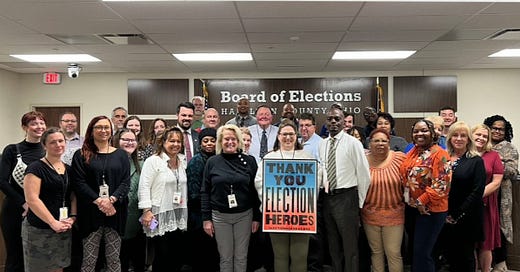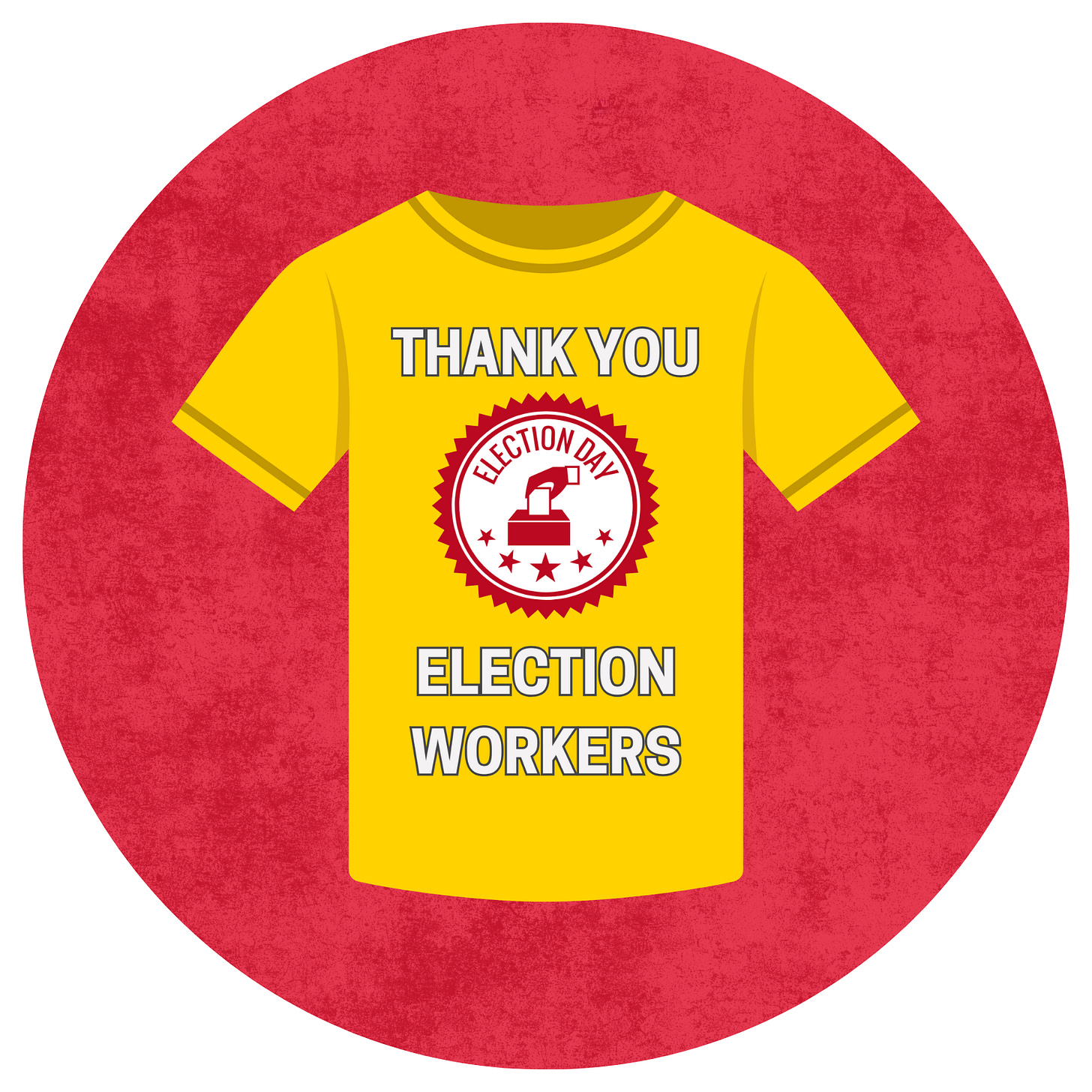Choosing to strengthen the elections workforce
With support from Democracy Fund, CDCE has studied the elections workforce all year. The research is clear. Even in hard circumstances, there are immediate opportunities to strengthen this workforce.
Elections are run by people.
Running elections in America is a massive undertaking involving hundreds of thousands of workers. Hard working staff in over 8,000 local and state election offices nationwide handle a wide range of tasks from warehouse management to media relations to cybersecurity. Tens of thousands of seasonal workers join for several weeks around elections to do tasks like logic and accuracy testing, preparing voting machines, and processing absentee ballots. And on Election Day, nearly 1 million Americans step up to work one very long day as poll workers at neighborhood polling places around the country.

This workforce is under increasing strain. Many local election officials report having urgent needs—such as aging buildings and a lack of adequate heating and cooling—that must be met to ensure the safety and security of our elections. One in three local election officials experienced harassment, abuse, or threats, with one in five concerned for their physical safety. Nearly a quarter of local election officials have left their roles since 2020.
We can choose to strengthen the elections workforce.
With support from the Democracy Fund, our team at CDCE has spent the last year investigating how to strengthen the elections workforce. We have scanned the literature from across disciplines to surface key insights and done original experiments with partners in the field to better understand the challenges these workers face. We have learned from the experiences of election workers across the country. We have learned from important survey and synthesis work done by colleagues about the specific composition, attributes, and workplace conditions in election administration. And we have learned from others studying ways to strengthen all public sector workforces.
The research is clear - there many ways we can choose to strengthen the elections workforce. We can post readable job ads. We can advertise them strategically. We can follow up with job applicants to keep them interested in open roles and turn them into champions for our field. We can compensate election workers fairly and thank them for their important work. We can clearly articulate the expectations associated with each role and help workers set goals for achieving them.
We can take steps to make sure all workers feel included and able to be themselves at work. We can manage our temp agencies to meet basic quality standards. Again and again and again we observe there are immediately actionable opportunities for both elections officials and advocates to dramatically strengthen the elections workforce.
We know we can choose to strengthen the elections workforce because there is overwhelming data that tells us the impact that making these choices can have. When we choose to strengthen the elections workforce we retain experienced leaders with priceless institutional knowledge. We recruit new workers with vital skill sets who are representative of the voters they serve. We give all election workers the kind of challenging and empowering workplace where they can grow and thrive. And we deliver more secure, trusted, and inclusive elections for the American people.
Last week we published a new resource page with tools and information about how to strengthen the elections workforce. We hope you’ll check it out!
4 ways to improve recruitment of election workers
As local election officials proceed with pre- and post-election hiring processes, there are several clear insights from the research about low cost ways to dramatically improve the recruitment of election workers.
1. Advertise Strong Job Ads
Create a simple, attractive job ad highlighting community and civic duty. Avoid jargon and specific roles. Focus on the impact and values instead.
2. Design an Applicant-Centric Process
Prioritize applicant experience, ensuring transparency, efficient communication, and a streamlined application and onboarding journey.
Did you know? 60% of applicants will leave a job application if it becomes too complex or complicated and 86% of gig applicants search for roles on their mobile device.
3. Turn Applicants Into Advocates
Treat every applicant with respect and dignity through clear communications, clear steps for onboarding/training and recognition of their efforts.
4. Execute a Broad Recruitment Cycle
Use data, diverse outreach methods, and optimize efforts to attract and hire a broad range of candidates.
What’s next for our research on the elections workforce
In the coming months, we will continuing to share our research in key spaces where people who can use it are gathering. CDCE Senior Fellow Alysoun McLaughlin will be presenting at the meeting of the National Association of Election Officials next week and we will continue disseminating these findings throughout this election season and beyond.
We also have important research about this topic in our pipeline including a literature review surfacing insights about how to avoid burnout and desk audits to better document the specific competencies required for different types of election roles. These desk audits have the potential to inform recruitment, training, and retention efforts across the sector in crucial ways.
We’d love to work with you to share our research findings or generate new insights about the elections workforce! Please reach out if you’d like to learn more.
Sam Novey is the Chief Strategist at the University of Maryland Center for Democracy and Civic Engagement and Secretary of the Baltimore City Board of Elections. CDCE Senior Fellows Lynn Handy and Alysoun McLaughlin also contributed to this report. GVPT Phd Students Isaiah Espinoza and Amy Meli contributed to the literature review. Maddie Wolf developed all graphic elements.






